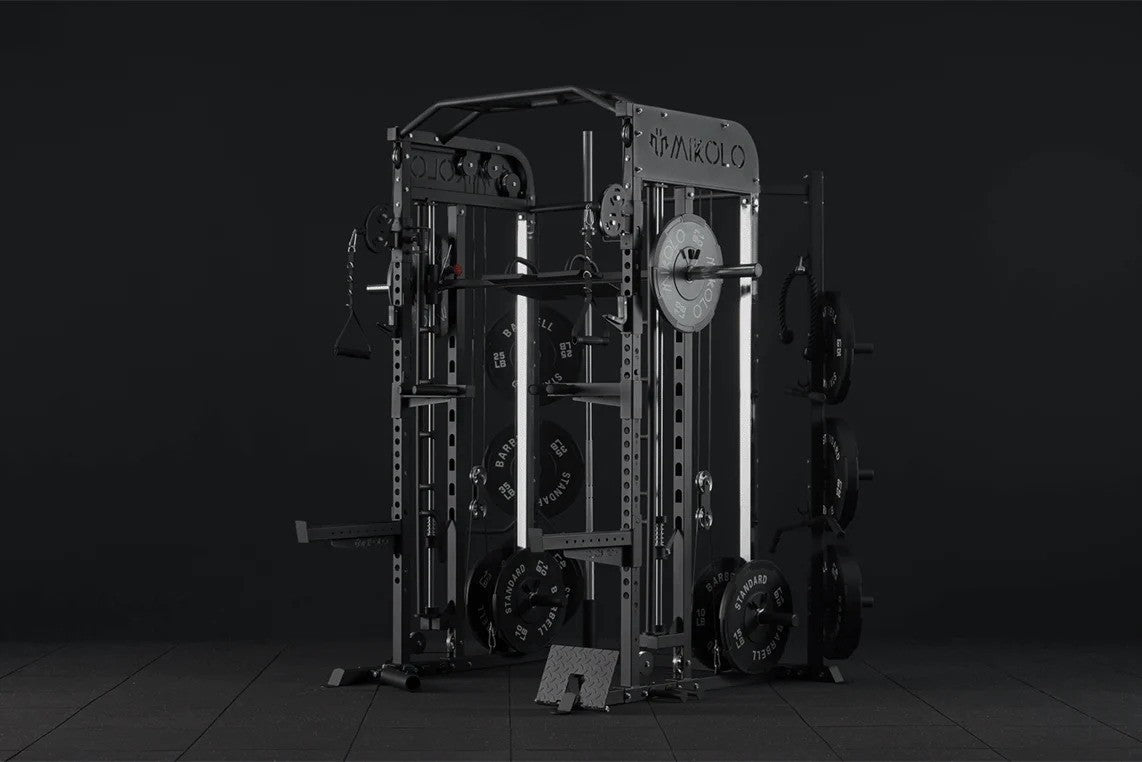When it comes to developing a thick, powerful back, few exercises rival the T-bar row. While the standard close-grip version targets the mid-back and lats, adding a wide grip to your T-bar row routine can dramatically shift the emphasis—and your results.
What Is a Wide-Grip T-Bar Row?
The wide-grip T-bar row involves holding the bar with your hands placed wider than shoulder-width, typically using a lat pulldown-style handle or a wide neutral grip attachment. This variation shifts tension toward the upper lats, rear delts, and rhomboids, helping to broaden the upper back and enhance that coveted V-taper.
T-Bar Row: Close Grip vs Wide Grip
Both grip styles offer distinct benefits, and choosing between them depends on your goals:
-
Close-Grip T-Bar Row
-
Emphasizes the mid-back and lower lats
-
Allows for a more compact range of motion
-
Encourages heavier loading due to a mechanically stronger position
-
-
Wide-Grip T-Bar Row
-
Shifts the load toward the upper lats and traps
-
Enhances scapular retraction and posture control
-
Demands greater shoulder stability and upper-back engagement
-
In practice, both are invaluable. For back development that’s both wide and thick, alternating between the two grips can help address muscular imbalances and ensure complete growth.
How to Perform the Wide T-Bar Row Correctly
-
Set up: Load a T-bar row machine or landmine with your desired weight. Attach a wide handle (or use lifting straps if going raw).
-
Grip: Take a wide grip with your palms facing each other or down, depending on your attachment.
-
Posture: Hinge at the hips with a flat back, chest lifted, and knees slightly bent.
-
Pull: Row the bar toward your chest or upper ribs, squeezing your shoulder blades together.
-
Control: Lower the bar under control to avoid bouncing or jerking.
Pro tip: Keep your elbows flared slightly outward during the pull to fully engage the upper lats and traps.
My Take from the Gym Floor
Incorporating wide-grip T-bar rows into my routine helped break through a long plateau in upper back development. For months, I relied heavily on pull-ups and close-grip rows, which built good lat depth but left my upper back looking narrow in photos. After a coach pointed out the imbalance, I added two sets of wide T-bar rows per week—and the difference became visible in under six weeks. Not only did my posture improve, but I noticed stronger performance in overhead lifts due to better scapular control.
When Should You Use a Wide Grip?
Consider adding the wide-grip variation when:
-
You’re aiming for upper-back width
-
Your shoulder blades lack control or strength
-
You want more variety in your pull-based workouts
-
You're recovering from lower lat strain and still want to train your back
Many lifters rotate between close and wide grips every few weeks. Others program them on the same day—starting with wide-grip rows for control and finishing with close-grip rows for intensity.
Final Thoughts
The T-bar row wide grip is a valuable tool for upper-back development, especially when used alongside its close-grip counterpart. If you’re looking to balance strength, aesthetics, and back health, don’t just pull heavy—pull smart. Integrate both grip styles, focus on form over ego lifting, and give your back the full-spectrum training it deserves.














































Leave a comment
This site is protected by hCaptcha and the hCaptcha Privacy Policy and Terms of Service apply.